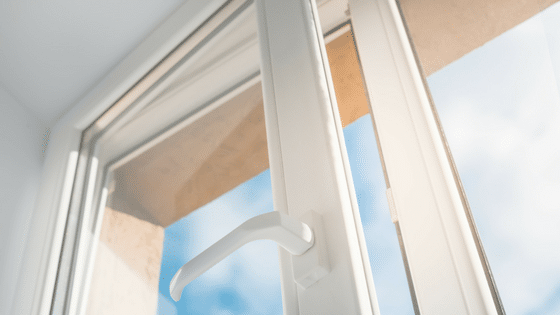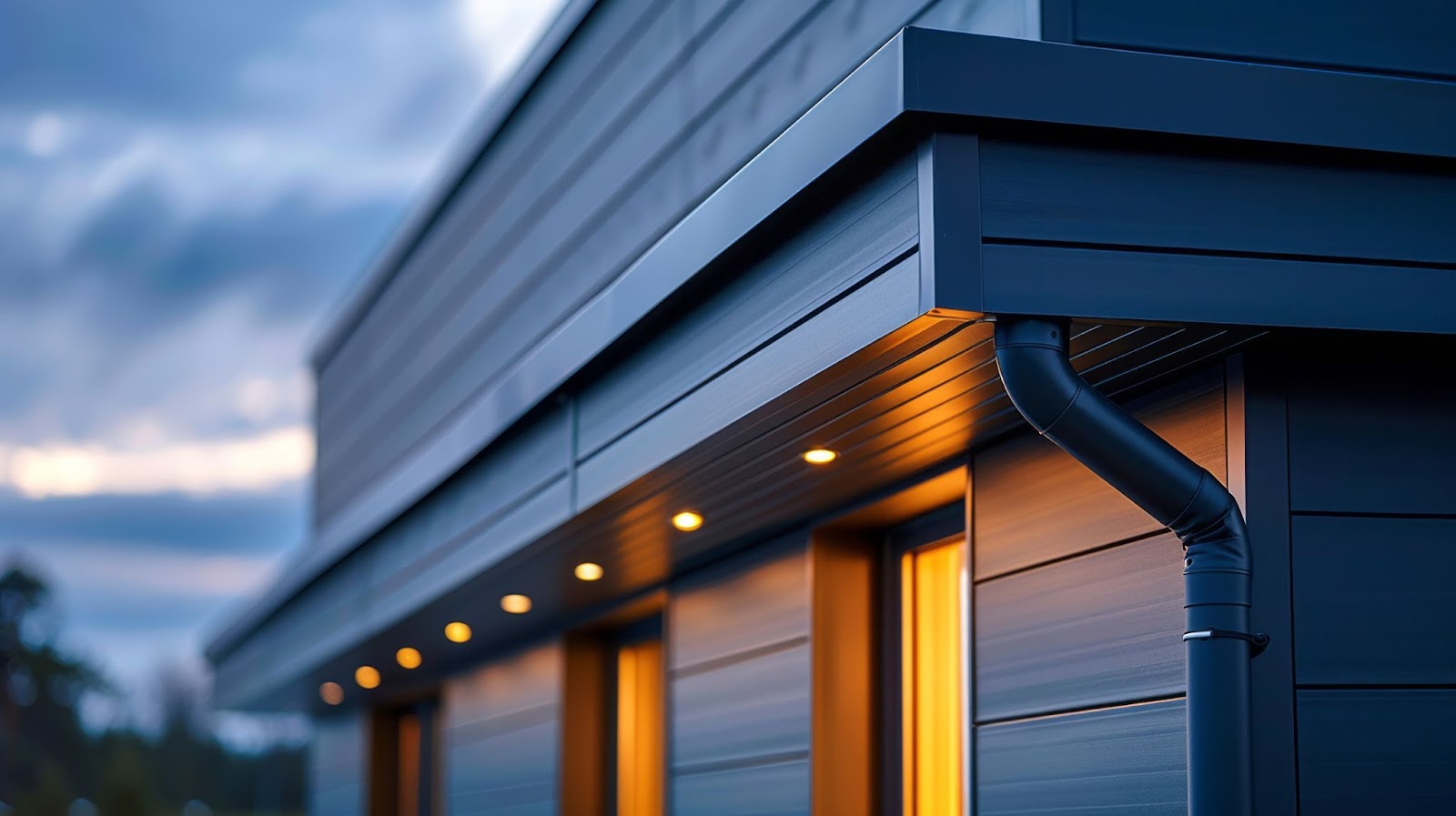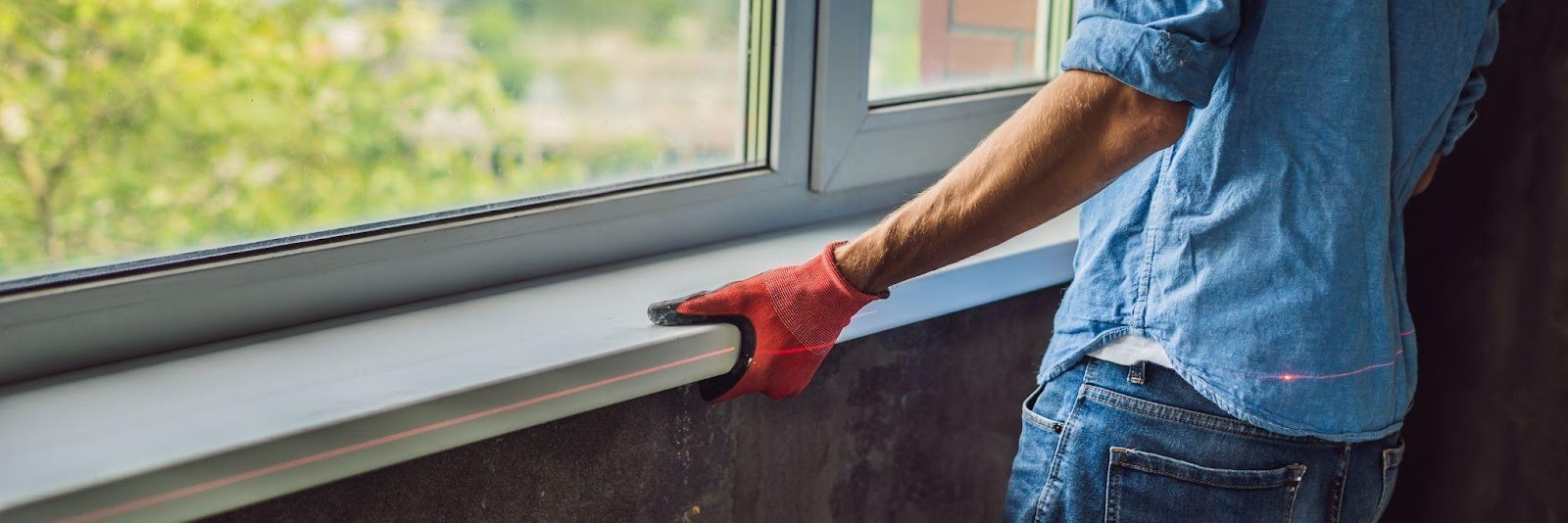If the windows in your home or commercial property are single pane, consider looking into other options.
When it comes to windows, not all are created equally. There are many options when deciding on the right windows for your property, and it can feel overwhelming. Between aluminum, vinyl, sliding, casement, krypton gas fill, argon, and more, making these decisions can be challenging if you need the right information.
To make the process a bit easier and less daunting, we are diving into all things windows, specifically single pane and its double and triple counterparts. Continue scrolling to learn more below.
What is a Single Pane Glass Window?
A single pane window features one layer of glass that fills the window frame. They are commonly found in older homes or commercial properties and are poor insulators. Single panes are inexpensive but do not have much of a place in residential properties anymore since there are much better options out there.
Single pane windows are perfect for garages, outdoor sheds, and other structures that do not require much insulation.
Bullet Point Takeaways:
Pros:
- Budget-Friendly — Single pane windows are far cheaper than double and triple glass pane windows.
- Lighter Weight — The more panes of glass your window has, the heavier they will be. Depending on the age of your structure, you may need to reinforce walls for multi-pane windows.
- Options, Options, Options — Single pane windows come in various styles and materials, giving you many options.
- Historic Feel — Older properties have plenty of character, and this type of window helps lend to its authenticity.
Cons:
- Not Energy-Efficient — These windows are poor insulators, allowing the property to get cold in the winter and hot in the summer, directly affecting your energy costs.
- Poor Noise Blocker — One sheet of glass cannot block out noisy neighbors, barking dogs, or loud traffic.
- Higher Long-Term Cost — Sure, it’s the cheaper option upfront. However, single glass pane windows increase bills and have a great need for repair, thus increasing overall costs.
Double Pane Windows
Windows with two glass panes are commonly referred to as double pane windows, insulated glass units (IGUs), or double glazed windows. Double pane options feature two panes of glass that are spaced between an insulation layer of clear, odorless air or gas, typically krypton or argon.
These IGU windows are extremely durable and help protect your property from the hot summer months, keep heated air inside your house during the winter, and provide an excellent insulated sound barrier. These windows can come with additional coats to block the sun’s harmful UV rays.
Double glazed windows are more expensive than their single pane counterparts. To get the most out of their insulated properties, ensuring the rest of your home is properly insulated and sealed ensures your IGU windows are a cost-effective investment.
Bullet Point Takeaways:
Pros:
- Improved Insulators — Double pane options are better insulators than single, saving you money in the long run.
- Better Noise Reduction — If noise is a concern for you, you’ll want to invest in double pane windows to help block out outside noise.
- Increase Home Value — Windows with two panes of glass are a great investment and improve home resale value.
Cons:
- Bigger Investment — These windows cost more upfront.
- No Single Replacements — To make the most of the benefits, you’ll need to replace all windows; you won’t see the same level of value if you do single replacements.
Triple Glass Windows
Triple glass windows are also called IGUs; however, they differ slightly from double glass windows. Triple pane windows have three panes of glass, where the middle pane is surrounded on either side by insulating air or gas.
These triple IGUs are the most expensive option of these three, but when installed correctly, they offer homes that suffer from extreme heat or intense cold, fantastic insulation.
Bullet Point Takeaways:
Pros:
- Energy-Efficient — Triple pane options are as energy-efficient as they come.
- Still Functional When One Pane Breaks — If one pane of the three becomes damaged, it’s okay! Homeowners still have a “double-paned window” with a single layer of insulating gasses.
Cons:
- Expensive Cost — It’s no secret that triple pane windows are not cheap— they are an investment!
Which Windows Are Best For My Property?
Windows featuring a single pane of glass is not typically used much anymore. They are not safe, durable, or efficient and do not block outside sound or seasonal temperatures. These windows are prone to moisture and air leaks and have the highest rate of heat losses and gains.
Since they only have two surfaces, the options are very limited regarding glazing and coating technologies. Although the single pane option is the lowest price, these windows are typically not a great choice for replacement windows, especially in Northern Utah.
Double pane options are the current industry standard and the most popular window type among property owners. This option performs significantly better when it comes to durability, insulation, and comprehensive window technologies. These windows have four surfaces to work with, so you can choose from plenty of coating options.
Transition technology, colored tints, and low-E windows are all available to property owners when they opt for double panes. Moreover, they have a choice when it comes to the space between each pane. There are several different types of gas fills, such as krypton, argon, and xenon.
These noble gasses improve insulation and have a higher density than air, resulting in less energy loss. These exciting features combined result in a noticeable difference and savings in your utility bills.
If you really want to take glazing to the next level, you’ll want to look into windows with three panes of glass. Triple pane options mean six total surfaces and two insulation spaces, resulting in even better soundproofing, security, insulation, and condensation control!
Regardless of what’s happening outside in regards to temperature, the interior surface of triple pane windows will never be hot or cold to the touch. These windows work best for properties in the coldest climate zones. That said, despite all of the added perks and advantages of windows with three panes of glass, property owners are hesitant to make the commitment to an additional glass pane.
Because windows with three panes of glass come with many more benefits, the price tag comes with many more dollar signs. Some homeowners feel these windows need more energy savings to justify the pricier initial investment. In some cases, it could take one to two decades to pay them off.
Windows and Energy Savings for Your Property
Upgrading your property’s windows to two or three glass pane windows can definitely help insulate your home. However, there are many other factors that property owners should pay attention to when trying to cut down on energy bills.
If your home has little to no attic or wall insulation, you will not see the benefits and advantages of installing energy-efficient windows such as double or triple pane windows. Of course, you will see some, but only some of the full effect. So, when property owners consider upgrading their windows, it’s crucial to consider their property’s total insulating power and capabilities.
New energy-efficient windows can help cut down on energy bills; however, even the most energy-efficient windows won’t be able to fully reduce costs or provide additional comfort within the home if poorly insulated.
Moreover, other factors determine how well a window will help insulate a property. A large amount of window space reduces a property’s total insulation capacity and increases the possibility for air conditioning or heat to escape your house.
Solid, insulated walls do a lot more for insulating your home than windows, even triple panes, ever could. While having many large windows in your house is a huge perk for many (think of the views, natural light, etc.), they do not compare to a solid wall.
Of course, this does not mean homeowners should not have many big windows in their houses! We’re here to tell you all the details so you can make the best decision for you and your family. We are a window company, after all — we’re here for the floor-to-ceiling windows and large picture windows throughout the entire house. It is crucial, though, for property owners to understand the full picture.
Maximizing the Energy-Efficiency of Your Multi-Pane Windows
As illustrated above, multi-pane windows can be a huge player in a home’s energy efficiency; however, this energy efficiency can only be maximized once the entire property’s insulation is addressed. When the attic or walls in your house aren’t fully insulated, energy-efficient windows cannot work as well as they could. So, to make the most of your window investment, it’s wise to make a full-property insulation effort.
Consider hiring an insulation professional to inspect your entire property and identify any weak spots. Addressing insulation issues will make your multi-pane windows a smarter investment.
Window Installation
Installing new windows is a huge investment, and the best way to protect and make the most of your purchase is to ensure that they are purchased from a trustworthy company and installed by a reputable contractor. Proper installation is critical; it makes or breaks how your windows function and directly determines their lifespan.
Even if a homeowner purchases the most expensive and energy-efficient windows in the world, if it’s not installed properly, you can never reap all of the advantages and perks of your new windows.
So, how do you know if your windows have been properly installed? Take a walk around the windows throughout your property. Can you feel a draft near any windows? If so, they may need to be sealed correctly. Moreover, if your windows are not appropriately flashed, you may have water leak issues later.
Finding a reputable company matters. Thankfully, the Mountain State Windows & Siding window experts are here for you.
Swap Out Your Single Pane Glass Windows with Mountain State Windows & Siding!
If a home or commercial property has single pane glass windows and you want to upgrade to a double or triple glass option, the Mountain State Windows & Siding professionals can help.
There’s no doubt about it that even the best windows are only as good as the installation behind them. For this very reason, our trusted and experienced team is dedicated to making your next window installation project replacement the greatest property improvement project you’ve ever taken on.
Whether you are building a brand new home and need your windows installed or are upgrading the windows in your current property, our team is here for you.
In our decades of service, we’ve come to realize that the best quality experience lies in the details, big and small. We put hours of hard work and craftsmanship into our projects and have the proper tools, experience, knowledge, and time. Our technicians have years of experience and are ready to tackle any big or small home renovation project throughout the Wasatch Front. When you choose Mountain States Window and Siding, you know you’re working with the best.
Our team is dedicated to providing you with professional and transparent service. We will always be upfront about our process and any accompanying costs. We also understand how important money is, so we will stay within your budget for the entire project.
You can rest assured that your new windows from Mountain States will boost your home’s curb appeal, let natural light in, keep debris out, and ensure that your property is well-insulated to keep you and your loved ones comfortable all year long.
If you live in Salt Lake City, Park City, Payson, Orem, West Jordan, Lehi, or a nearby area along the Wasatch Front, contact the trusted team at Mountain States Window & Siding today! If you’re considering a home renovation project, check out Mountain States Kitchen & Bath for your bathroom and kitchen remodeling needs!




